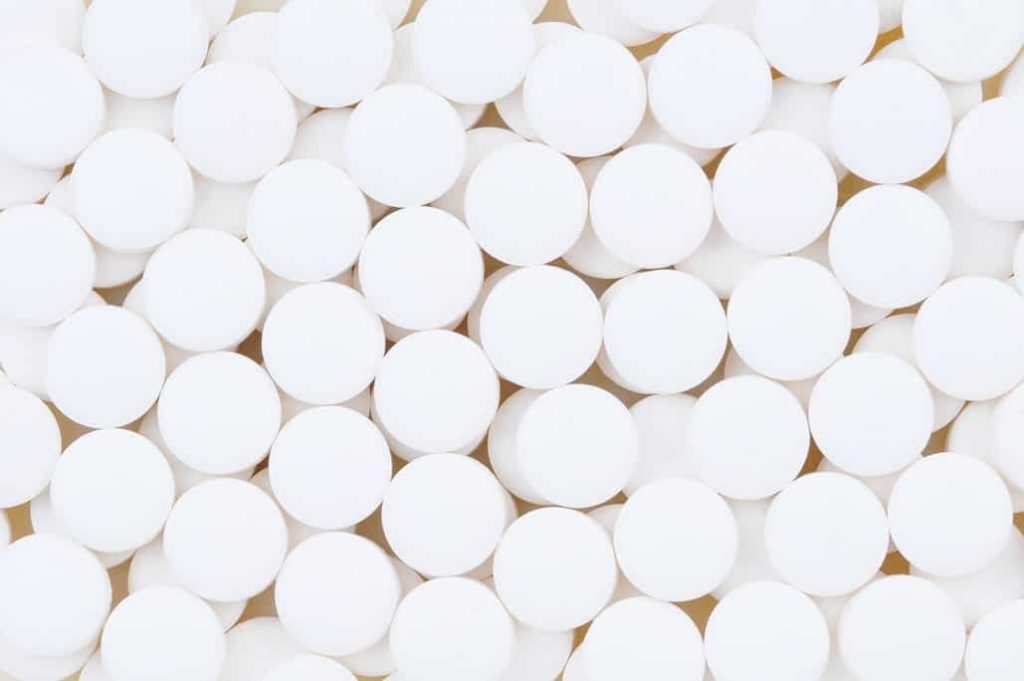In 1995, the American Pain Society, an organization comprised of various types of health professionals, made a recommendation that doctors should consider pain a “fifth vital sign”, and monitor it as they would a patient’s pulse or blood pressure. That same year, OxyContin, a controlled release formulation of the opioid painkiller oxycodone, was approved by the Food and Drug Administration. OxyContin was aggressively (some say over-aggressively) marketed to doctors with all sorts of exaggerated (and ultimately, fraudulent) claims, and within just a few short years, was one of the most-prescribed medications in America.
“To allow a patient to experience unbearable pain or suffering is unethical medical practice.” ~The New England Journal of Medicine (1989)
An Explosion of Opioids in America
Between 1999 and 2010, the sales of opioid medications such as OxyContin, Percocet, and Vicodin, QUADRUPLED. Since OxyContin was introduced in 1996, there have been over $31 billion worth of sales. By 2010, the United States, which has only 5% of the world’s population, was consuming 80% of the global supply of oxycodone, to go along with 65% of the world’s hydromorphone, and 99% of the world’s hydrocodone. To an entire generation of doctors, this was an abrupt about-face. In the medical schools of the time, most physicians had been taught that opioids were so addictive that they should only be prescribed to dying patients to ease end-of-life suffering.
More about Oxycodone and Related Formulations
Oxycodone was first synthesized in Germany in 1916, in an attempt to make an analgesic drug that was effective at pain relief as morphine and heroin but without the dangers of dependency. Unfortunately, while the first goal was met, the second was not. Oxycodone was introduced in the US in 1939, and today there are several medication formulations that include oxycodone:
- Immediate-Release Oxycodone (Roxicodone, Oxynorm, OxyFast)
- Controlled-Release Oxycodone – 12 hour (OxyContin) – Approved in 1995
- Immediate-Release Oxycodone with acetaminophen (Percocet) – Approved in 1976
- Immediate-Release Oxycodone with aspirin (Percodan) – Approved in 1950
- Immediate-Release Oxycodone with ibuprofen (Combunox) – Approved in 2004
Oxycodone as a Drug of Abuse
As is the case with other opioids, oxycodone formulations are popular drugs of oxycodone abuse, because of the following effects:
- Euphoria
- Relaxation
- Relief from anxiety
- Pain relief
The most commonly-abused formulation of Oxycodone is OxyContin. According to the 2013 National Survey on Drug Use and Health, young adults between the ages of 18 and 25 are the most likely to abuse oxycodone – roughly 10%, compared to just 6% of people age 26 or older.
- Past-month non-medical use of OxyContin – 492,000 people 12 or older
- Past-year non-medical use of OxyContin – 1,442,000
- Lifetime non-medical use of OxyContin – 6,973,000
- According to the National Institute on Drug Abuse, US pharmacies filled 53 Million OxyContin prescriptions in 2013
- To put that number in perspective, that is one bottle of OxyContin pills for every six people in the US where we know the and
- Between 1999 and 2014, more than 165,000 people in America died from prescription opioid overdoses
- In 2014, 18,893 people died from prescription opioid overdoses
- Overdose rates are highest among non-Hispanic whites and Native Americans
- In 2014, almost Two Million Americans misused or were dependent on prescription opioid painkillers
- Approximately 25% of people who are prescribed opioid painkillers long-term for non-cancer pain will become addicted.
- 80% of people who abuse heroin were first addicted to prescription opioids
- In 2014, 586,000 people in America had a substance abuse disorder involving heroin
- 23% of people who even try heroin become addicted
- 10,574 Americans died in 2014 due to heroin-related overdoses
How Did the Epidemic of Oxycodone and Other Opioids Get So Bad in the US?
The opioid epidemic in America has its roots in misinformation. Once upon a time, powerfully effective-yet-effective opioid painkillers were typically prescribed for acute, short-term pain – following surgery, for cancer patients, or for those suffering at the end of life. But in 1980, a letter published in the New England Journal of Medicine claimed that only one percent of patients who received opioids while hospitalized at Boston University Medical Center became addicted. Following that, the journal Pain published a study in 1986 that concluded that opioids “can be safely and effectively prescribed to selected patients with relatively little risk of producing the maladaptive behaviors which defined opioid abuse“, even for non-cancer pain. Large pharmaceutical companies got in on the act. They began to push opioid medications – extolling the benefits to doctors across the country virtually non-stop. They especially recommended OxyContin and other opioids for back and neck pain. In an ironic twist, the big drug companies funded nonprofit agencies such as The American Pain Society and the American Academy of Pain Management. After this fortuitous funding, the American Pain Society distributed guidelines calling on doctors to expand their use of prescription opioids to relieve pain. Even the Federation of State Medical Boards was given money by the pharmaceutical firms to draft and distribute opioid-prescribing guidelines. Doctors could be punished for “inadequately” treating pain. Through it all, prescribing doctors were misled – for example, they were taught that because OxyContin was time-released, users would be unable to get their desired “high” from misuse, thereby reducing the chances of addiction. In 2007, Purdue Pharma and three of its executives pled guilty to criminal charges that they had intentionally misled patients, doctors, and even the FDA about the risks of OxyContin abuse and addiction. Included in the charge was the fact that sales representatives had aggressively marketed OxyContin as a safe alternative to other short-acting opioids. By 2012, 259 MILLION opioid prescriptions were written in the United States – enough to give every single American adult their own personal bottle of pills. 
What Are Some Signs of Oxycodone Abuse?
All opioids produce tell-tale signs when abused:
- Drowsiness/Nodding Off
- Extreme Sedation
- Euphoria/Lightheadedness
- Itching
- Nausea/Vomiting/Constipation
- Headache
- Dry Mouth
- Low Blood Pressure
- Respiratory Suppression
This last warning sign is especially worrisome, because respiratory suppression – the inability to breathe – is the #1 cause of opioid deaths. That risk is greatly magnified when other drugs are also taken – benzodiazepines, other opioids, or alcohol. In addition, the chronic abuse of opioid painkillers can cause harshly unpleasant withdrawal symptoms whenever the drug is discontinued, even temporarily:
- Extreme Restlessness and Agitation
- Depression
- Profuse Sweating
- Muscle and Bone Pain
- Chills
- Nausea/Vomiting/Diarrhea
The high risk of addiction and the extreme risk of overdose has convinced officials in the federal government to speak up. The Surgeon General of the United States recently released a letter to every prescribing doctor, dentist, and pharmacist in America urging them to change to more responsible prescribing practices. Dr. Vivek Murthy said, “I know that solving this problem will not be easy. We often struggle to balance reducing our patients’ pain with increasing their risk of opioid addiction. But as clinicians, we have the unique power to help end this epidemic. As cynical as times may seem, the public still looks to our profession for hope during difficult moments. This is one of those times.”



